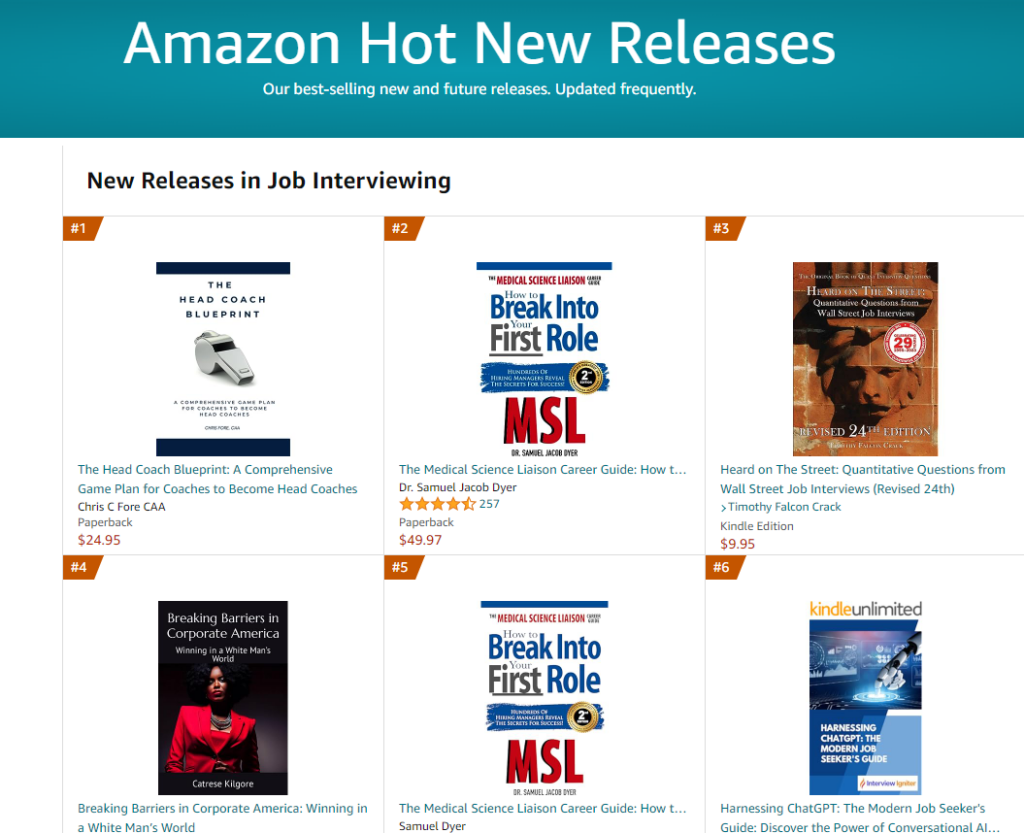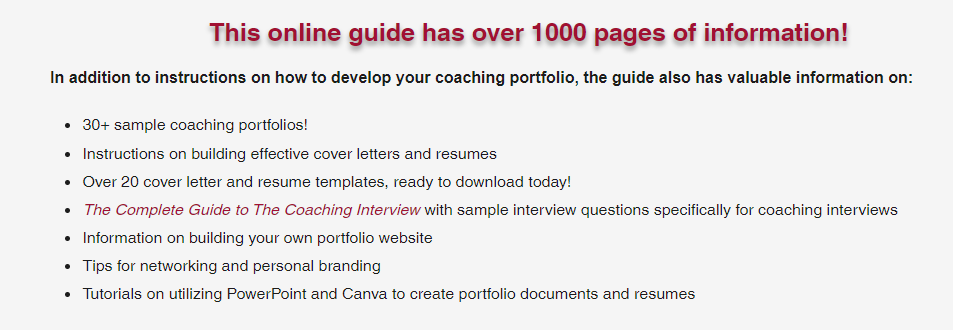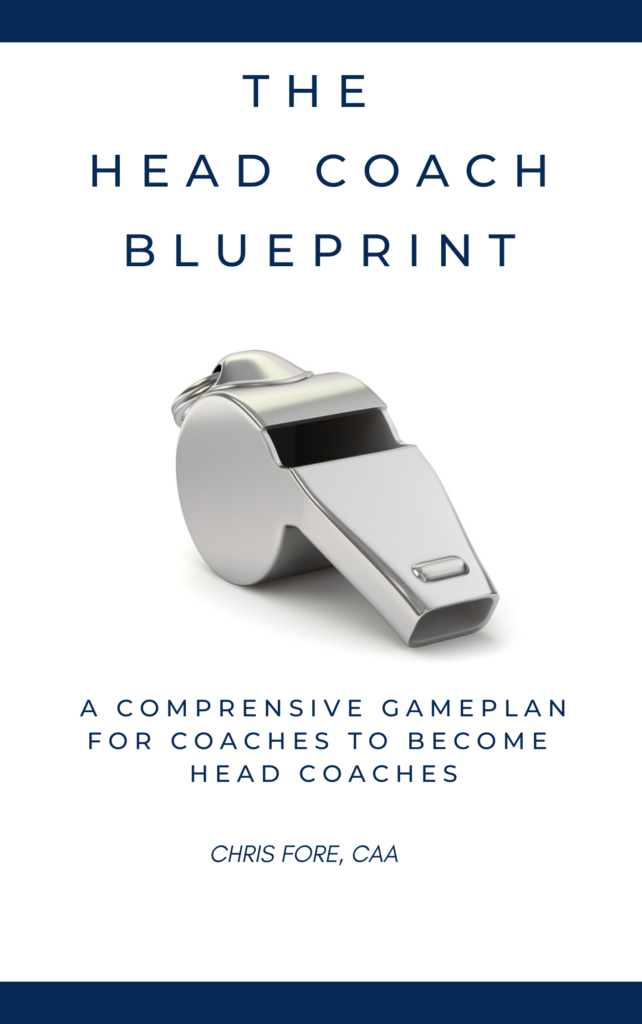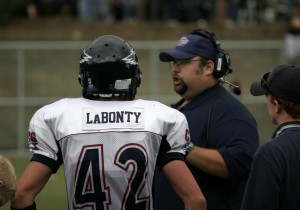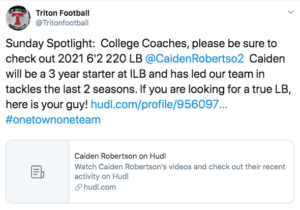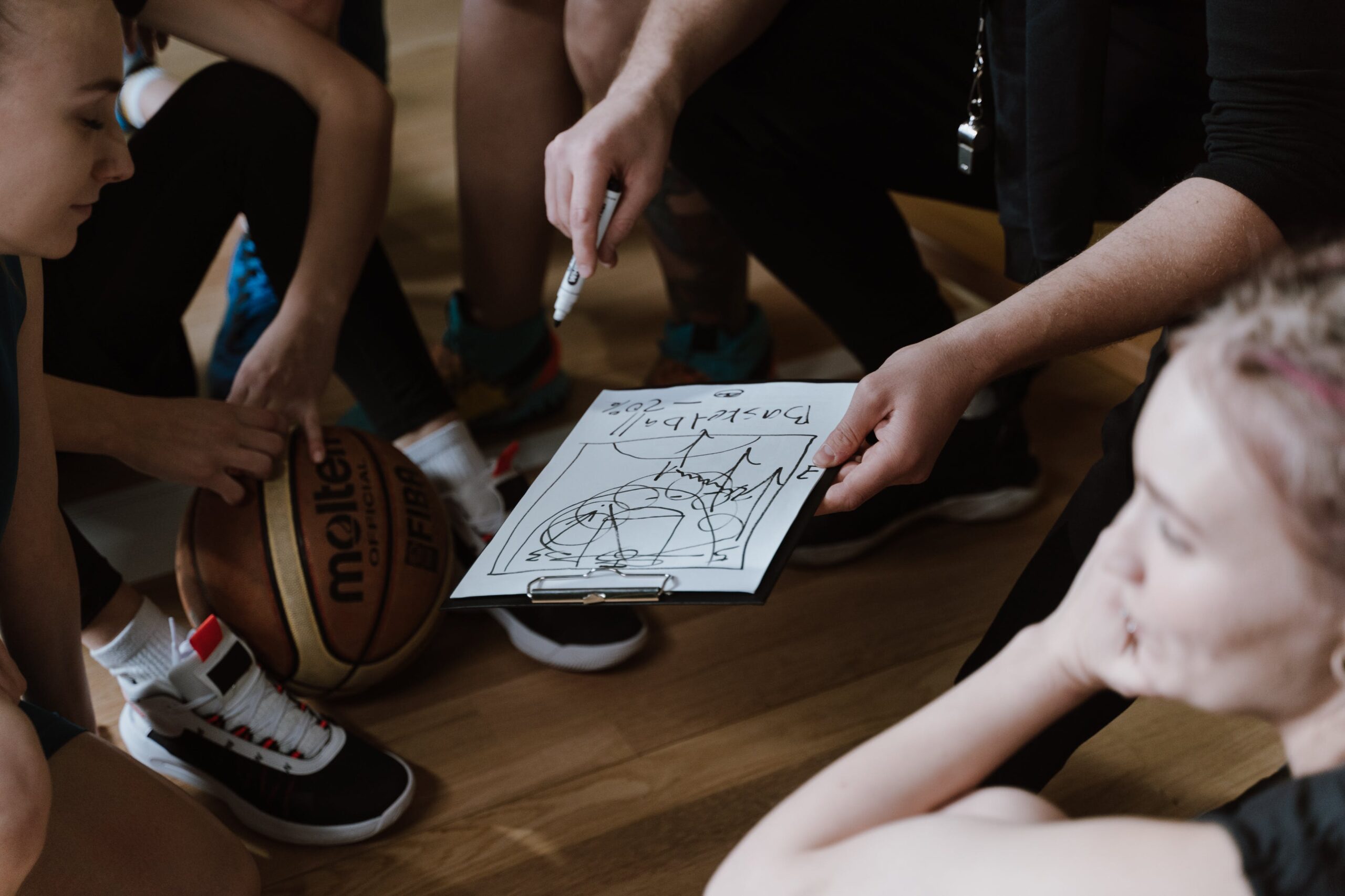
This is a guest post by Coach Bill Vasko, the founder of The Coaching Portfolio Guide.
Not only is this a guest post, but this is part of a chapter from my book The Head Coach Blueprint. The Head Coach Blueprint was the best selling book for job interviewing in its first week on Amazon!
Thank you Coach Vasko for this amazing chapter on one of the most important pieces of the job search process: the coaching portfolio! Now, on to Coach Vasko!
When coaches ask me what they can do to stand out in the job search process, I ask them if they have their coaching portfolio prepared. Many coaches aren’t sure what a portfolio consists of, let alone have one prepared! The coaching portfolio is a tool that provides a potential employer insight into you as a coach and a person. It can answer a lot of questions for a potential employer before an interview even takes place. It can also be the difference between getting the interview or having your resume placed at the bottom of the stack.
In 2014, I developed The Coaching Portfolio Guide website. After writing an article series on building a coaching portfolio, I realized there was a need for a comprehensive resource that would guide coaches through the process of building their own portfolio. In the time since I first created the website, it has grown from an informational guide to a one-stop shop for documents, templates, sample portfolios, articles, videos, and tutorials!
Here are 7 reasons why you need a coaching portfolio:
- Gives primary hiring person more detailed information about you beyond the resume.
- Gives you a reason to follow up after submitting your resume/application.
- Demonstrates your organizational skills and attention to detail.
- Gives you something to hand out to the committee at the interview.
- Helps structure your philosophies/ideas for building a program and developing your staff.
- If you lack experience, provides an opportunity to demonstrate your abilities.
- Prepares you for those “tough” interview questions.
Not only is the coaching portfolio a critical tool for the job search process, but it is also an invaluable tool for you as a coach. It contains information that you should be using every day with your program, your team, and your coaching staff!
I personally use things from my portfolio in my everyday coaching–it serves as a great resource and a staff manual. In my opinion, the best way to create your portfolio is to sit down and type out your thoughts, ideas, philosophies and then revisit and update it on a regular basis. It’s best to create individual documents, not just one long document. Creating individual documents allows you to not only use those documents in your coaching on a daily basis, but it also allows you to customize your portfolio for each job that you may be applying for.
What Is a Coaching Portfolio?
So, what does building a coaching portfolio involve? A coaching portfolio is a detailed document that answers the following questions for a hiring committee:
- Who are you?
- What have you done?
- When did you do it?
- Where did you do it?
- How did you do it?
- Why should we hire you?
Coaches often have a difficult time with self-promotion. It doesn’t come naturally because we are team first focused. Building a coaching portfolio will force you to get out of your comfort zone. Not only does a portfolio give you an opportunity to display your philosophies, values, and methods, it’s a tool designed to show off your past highlights and achievements.
In brief, a coach should present their abilities to a hiring committee in the following manner with each step of the process building on the previous:
- Cover letter
- Resume
- Introductory email
- Portfolio
- Preliminary phone/video interview
- On campus interview
- Follow-up
A portfolio is a critical tool that allows the search committee, AD, principal, etc to get a more comprehensive view of you as a person and a coach.
In addition to providing an avenue for displaying your philosophies and achievements, the portfolio allows you to go into more detailed explanations of how you plan to build a program that is successful on and off the field.
Most coaches spend a lot of time talking about standards, expectations, goals, character development, and team-building in their portfolio. Those are concepts that are important to us and our programs. Therefore, we tend to spend a lot of time discussing those concepts in our portfolios. While those things should be included, they can often become boring and redundant. Instead, find ways to include unique things that will jump out to the hiring committee. Put a twist on something….how are your philosophies on building a program different from what other coaches are doing? What has led to your past success? Provide detailed information that outlines your plan.
One way to stand out beyond the content of your portfolio is to present the portfolio in a different or unique way. I build my portfolio as a presentation so that I can utilize images and graphics. The format and layout of your portfolio can help present your information in a much more dynamic and engaging manner. We will touch more on this topic in a bit.
Though your coaching portfolio should provide background on you and your philosophies, it should also contain information that shows the potential employer how you fit into their program or institution. What does that mean for you? It means you can elevate your chances of being hired if you tailor your portfolio to show that you are familiar with the school, the program, the history, the traditions, the players, the community, the current philosophies, etc. You can accomplish this by doing some homework prior to applying for a position to show that you have a sincere interest in the coaching opportunity.
Again, I recommend that you develop your portfolio as individual files instead of creating one static document. This will make it easier to add or remove things from your portfolio as you apply for different jobs. You will be able to make multiple copies of the portfolio and you can then insert pages that are customized specifically for the job you are applying for.
Another recommendation that I make is to develop the portfolio with the school that you are applying for in mind. Create a cover page with the name of the school, the mascot, and the school colors. On any of the custom documents that you create, try to add the school’s name where it makes sense. This shows that you have given thought and consideration to the preparation of your portfolio and didn’t just deliver a carbon copy of a basic portfolio.
The portfolio should also reflect the environment of the school you are applying to – for example, if you are applying for a position at a school that is struggling financially, a “fundraising” section may be important to include. Whereas if the school is financially well-off, fundraising may not be an important topic. If you are applying for a position with a high school program that has perennially produced college athletes in the past, it may be important to include a section about college recruiting. Don’t include too much information in the portfolio–let the portfolio provide a glimpse into key areas of your program and philosophies. The interview is where you want to expand upon these key areas.
When you have a well thought out portfolio that reflects your philosophies, values, and program foundations, the interview process will come more naturally to you. When you spend time putting your thoughts and ideas down on paper, you become more prepared for those “tough” interview questions. You become confident in your philosophies and your responses to interview questions will reflect that confidence.
Coaches frequently ask if I can build a portfolio for them, or if I have a template they can use to plug in their personal info. That’s not how a portfolio works. A coach who uses a template or a portfolio built by someone else will be exposed during the interview process. They will stumble when it comes time to explain their philosophies and their plan for the program. Your vision isn’t built overnight, and neither is a quality coaching portfolio.
Why Your Portfolio Should Be More Than Just a “Template”
As I mentioned in the previous section, I receive questions about my website, The Coaching Portfolio Guide, on a regular basis. Many coaches are seeking an easy way to develop their coaching portfolio. They want a tool where they just plug in their info and “Presto!”…..they have a coaching portfolio. For anyone who has created a coaching portfolio, they know it is not that simple. Creating a portfolio is a tedious, time-consuming process. It is a culmination of your achievements, philosophies, and values. And in order to convey the proper message to a hiring committee, you must spend the time personalizing your portfolio.
My website is an instructional website. It has sections dedicated to a variety of components that a coach can include in their portfolio. In each of those sections, we explain why you may want to include that component. We also provide sample documents and sample portfolios submitted to us by actual coaches in various sports. That way, you can see what other coaches are doing in their portfolios. This will give you ideas as you build your own portfolio based upon your personal philosophies and values.
The Coaching Portfolio Guide was designed in this format for a few reasons:
1 – The portfolio should reflect your personal philosophies regarding program building, staff development, strategies, and teaching methods. It would be impossible for me to create a template that would encompass all of the things that could potentially be included in a portfolio.
2 – The portfolio should be a compilation of documents that personally reflect YOU as a coach. Again, a template cannot do that.
3 – A portfolio should be dynamic in its appearance. I recommend using a variety of graphical presentations in your portfolio to really make it stand out. I love using PowerPoint and Canva to create my documents because of the ease of adding graphics and images.
4 – As I mentioned previously, a portfolio should be a dynamic, ever-evolving collection of documents, not one static document. You should be modifying the portfolio for each job you are applying for. For example, when I apply for assistant coach positions and I am interviewing with the head coach, I prepare a portfolio that focuses more on my knowledge of the strategies and techniques for that particular sport. However, if I am interviewing for a head coaching position with an athletic director who may not have much knowledge of my sport, I will prepare a portfolio that focuses more on program building, staff development, character building, and program standards.
Again, I pick and choose the documents I will include in the portfolio. I also have a website-based portfolio that I send out when I apply for jobs. This allows me to include more documents that discuss my tactical and strategical philosophies for my sport in greater detail. When I have an interview, I create spiral bound hard copies of my portfolio, printed in color, that are specific to the position and school I am interviewing at.
I believe that there are a number of ways that you can create and design your portfolio. There is no wrong way. While having a website where you just type in your info and in return it spits out a portfolio would be convenient, I don’t think it would truly reflect who you are as a person or a coach. And while it’s okay to “borrow” other documents or items from someone else’s portfolio–I have definitely done it–I think the most rewarding part of creating a portfolio is that it really is a representation of you as a coach and person, as well as a reflection of the type of program you want to develop. A coaching portfolio is something that is always evolving, just as your beliefs and philosophies continue to adapt and evolve over time.
When you become a member of my website, The Coaching Portfolio Guide, you get access to portfolio document templates that were created in Canva. Just click and download the templates directly into your Canva account! Note, as I mentioned in the previous section there is no such thing as a magic template. With these Canva templates, you still must create the content!
No matter what tool you use to create your portfolio, you want to be able to download it as a PDF file. This makes it simple to share and send your portfolio via email. When saving your portfolio as a PDF, make sure that your formatting is preserved and any videos that you included are operational.
Contents of a Coaching Portfolio
Next, I will outline ideas for sections that you may want to include in your coaching portfolio. This will give you inspiration for documents you should be preparing for your portfolio. Please keep in mind that these sample sections are recommendations. It is not necessary to include every single item in your portfolio. Pick out the areas that are most important for the job you are applying for. Pick out the areas that highlight your strengths and where you can bring value to a program. Some of these sections may be better suited for your staff manual once you are a head coach.
The portfolio should be a direct reflection of you and your philosophies on building a quality athletic program. Even if you are applying for an assistant coaching position, your portfolio should provide a look at how you would build your own program if you were the head coach. Again, the portfolio should be a direct reflection of YOU!
Let’s dive in!
Career Highlights
The first document is the career highlights document. This is basically a summary of your resume. Include your education, where you’ve worked, and job title. Do not include any of your duties or responsibilities. This is assuming that the search committee already has your resume of course.
Since they already have your resume, you’ll just want to summarize or highlight your experience so that the hiring committee can see it at a glance in your portfolio.
Coaching Highlights
The next document is the coaching highlights document. This document gives you the opportunity to brag about yourself and your accomplishments. In this document, include any type of special achievements of the team or individuals that you coached. One thing that you should try to emphasize is how the program improved while you were coaching there. Include on-field and off-the-field accomplishments.
I’m often asked, for each position/program, is it better to start with your most recent coaching highlights and achievements, or should you start with the oldest highlights and achievements?
In my opinion, you should start with the oldest highlights and achievements first. If you were coaching at a bad program, for example, you’ll want to show the progression of improvement in each year. It doesn’t make sense to list the most recent highlights first because then, as the reader goes down the list, the highlights would not be as impressive.
Now, if you have been in a program for a long period of time and you’ve had a long stretch of good highlights, then I would definitely list the most recent highlights first.
Coaching Philosophy
At some point in everyone’s coaching career, they typically sit down and develop a coaching philosophy. If you haven’t yet, now is the time to do it.
I believe it is important in your coaching philosophy to expand upon the things that are important to you beyond the X’s and O’s. Think about the reasons you initially wanted to get into the coaching profession. Not sure how to start? We have a tutorial on writing your coaching philosophy in The Coaching PortfolioGuide that is available to all members.
Core Values / Mission Statement / Code of Ethics
This next document is a summary of your core values as a coach. It could also be a mission statement or a code of ethics.
I believe it is important to include some type of document that demonstrates what you stand for–some type of “standards” or “values” that you deem important in your program–what you expect from yourself, your staff, and your players.
A code of ethics is a creed that you strive to live by in the coaching profession. Instead of a code of ethics, you could instead develop a mission statement or a list and description of your core values or the “pillars” of your coaching philosophy.
Teaching Credentials & Certifications
Depending on what type of position you are applying for (high school versus college) you may need to submit information regarding your teaching credentials or certifications.
You may also need to provide a separate section in your portfolio, or a separate teaching portfolio altogether, showcasing your teaching abilities. This would include your teaching philosophy, sample lesson plans, and lessons that you have developed.
If you are applying for a high school position that includes teaching + coaching, do your research and determine which aspect of the position is the most important in the eyes of the hiring director. If you will be interviewing with the principal and the athletic director, you will need to impress both.
You may also want to include a page that lists any other professional certifications that may enhance your chances for a particular job. This could include certifications that are general coaching certifications, sport-specific certifications, or certifications from other professional organizations (for example, strength and conditioning organizations).
This chapter of my book The Head Coach Blueprint is CHALK FULL of information. Some of the other topics addressed in this chapter alone are:
- Letters of Recommendation & References
- Testimonials – What they’re saying
- First 30/60/90 Days on the Job
- Establishing Goals at Your New Program
- Team Policies / Team Standards / Player Code of Conduct / Disciplinary Procedures
- Keys to a Successful Team
- Philosophy on Playing Time
- Player Evaluation Tools
- Preseason & Postseason Questionnaires
- Fundraising
- Feeder Program Philosophy
- Parent & Media Relations + Social Media
- Booster Club Philosophy and Ideas
- Student Body & Community Engagement
- Community Service Programs
- Organizational Schedule & Calendars
- College Recruiting Plan for High School Coaches
- Recruiting and Retention Plan for High School Coaches
If this partial chapter is of interest to you, then you’ll most definitely benefit from the entire chapter from The Head Coach Blueprint! Go get it now! This partial chapter is just one of FIFTY chapters! This book is more than 500 pages of information about the job search process!

